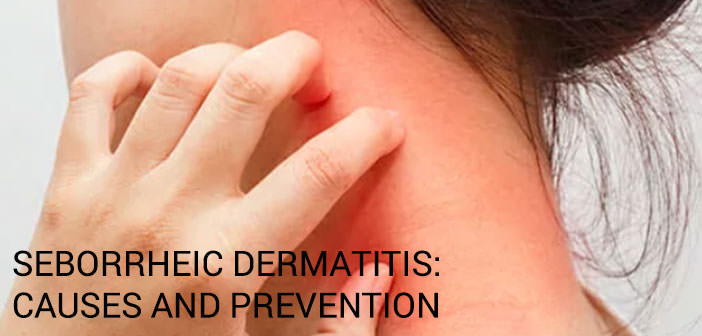Seborrheic Dermatitis: Causes and Prevention
Seborrheic dermatitis is a prevalent inflammatory skin disease. Various conditions have been observed that may favor it and others that help prevent and reduce its symptoms. There is a form of seborrheic dermatitis that is typical of the newborn: the so-called milky crust.
Table of Contents
What is seborrheic dermatitis, and what are the main symptoms?
It is called seborrheic, a form of dermatitis that occurs in the areas where the sebaceous glands are most present and numerous, namely the face, the scalp, and the central interior area of the chest.
The symptoms of seborrheic dermatitis are manifested by the formation of red areas and scaly lesions, often itchy, and follows a cyclical pattern; one of the factors that most affect the improvement of symptoms is the climate change; in summer, the lesions tend to be less present or even to disappear. Seborrheic dermatitis is more common in men.
Seborrheic dermatitis: Causes
To date, the precise causes of seborrheic dermatitis are not yet known. However, some factors have been identified that may play a role in the onset of the disorder:
- Climate and seasonality: Seborrheic dermatitis lesions are more severe and frequent in the winter months.
- Stress: Even if the reasons are not yet well known, it has been observed that stressful conditions can trigger an episode of dermatitis or make its symptoms worse.
- Neurological pathologies: Seborrheic dermatitis has been observed to affect people with Parkinson’s disease and other neurological diseases more prevalently.
- Malassezia furfur: Malassezia furfur is a yeast strongly present in the areas reached by seborrheic dermatitis. The role of this mycotic agent in the development of the disease has not yet been fully understood.
- HIV: Seborrheic dermatitis affects people with HIV more frequently and severely.
Prevention of seborrheic dermatitis
There are no specific measures for preventing seborrheic dermatitis, but there are precautions that can be taken above all to prevent exacerbations.
Hygiene: Avoid using aggressive soaps and shampoos because they deplete the external layers that protect the skin; they prefer natural and delicate products. For the bath, you can choose an oily product among those with the quality of rebalancing sebaceous secretions, such as hypericum oil and tea tree oil.
Scratching: Avoid scratching and detaching the scales manually as these maneuvers promote inflammation, causing the lesions to worsen.
Stress: It is a bit like a dog biting its tail because it is often seborrheic dermatitis itself that causes stress. To avoid or at least reduce emotional and psychological stress conditions, it is advisable to adopt a healthy lifestyle that includes the most natural rhythms and the habit of carving out a few moments of healthy relaxation.
Supply: Certain foods have been identified that can help trigger or worsen the symptoms of seborrheic dermatitis: leavened baked products (bread, pizza …); milk and dairy products; desserts. On the contrary, they are considered foods to be recommended: all fruit and vegetables, whole grains, and non-fat protein foods.
Hydration: You need to hydrate enough, drinking about two liters of water a day. It is advisable to avoid sugary drinks.
Seborrheic dermatitis of the newborn
Seborrheic dermatitis of the infant is a particular form of dermatitis, better known as the milky crust. It appears in the first months of life and presents with reddish and yellow-orange scales, rather large in size, located mainly on the head. Still, it can also affect the eyebrows, the forehead, the cheeks, the folds of the neck, the axillary cavity, and the diaper area.
In the past, it was believed that the cause of the infant’s seborrheic dermatitis was to be found in milk-based nutrition, hence the name milky crust.
Today we know that the causes of this excessive production of sebum are other, the presence of maternal hormones in the child’s organism, the immaturity of the skin regeneration process, and the abnormal behavior of a fungus present on the skin, the Pityrosporum orbicular.
Seborrheic dermatitis of the infant resolves spontaneously within the third/fourth month of life. It is advisable to take some measures to remove the scales, as they form: with gauze, apply a delicate natural oil on the affected skin, for example, oil of sweet almonds, coconut oil, or olive oil, to soften it; then gently remove the scales with a comb with tight and rounded teeth, taking great care not to irritate the skin further.

